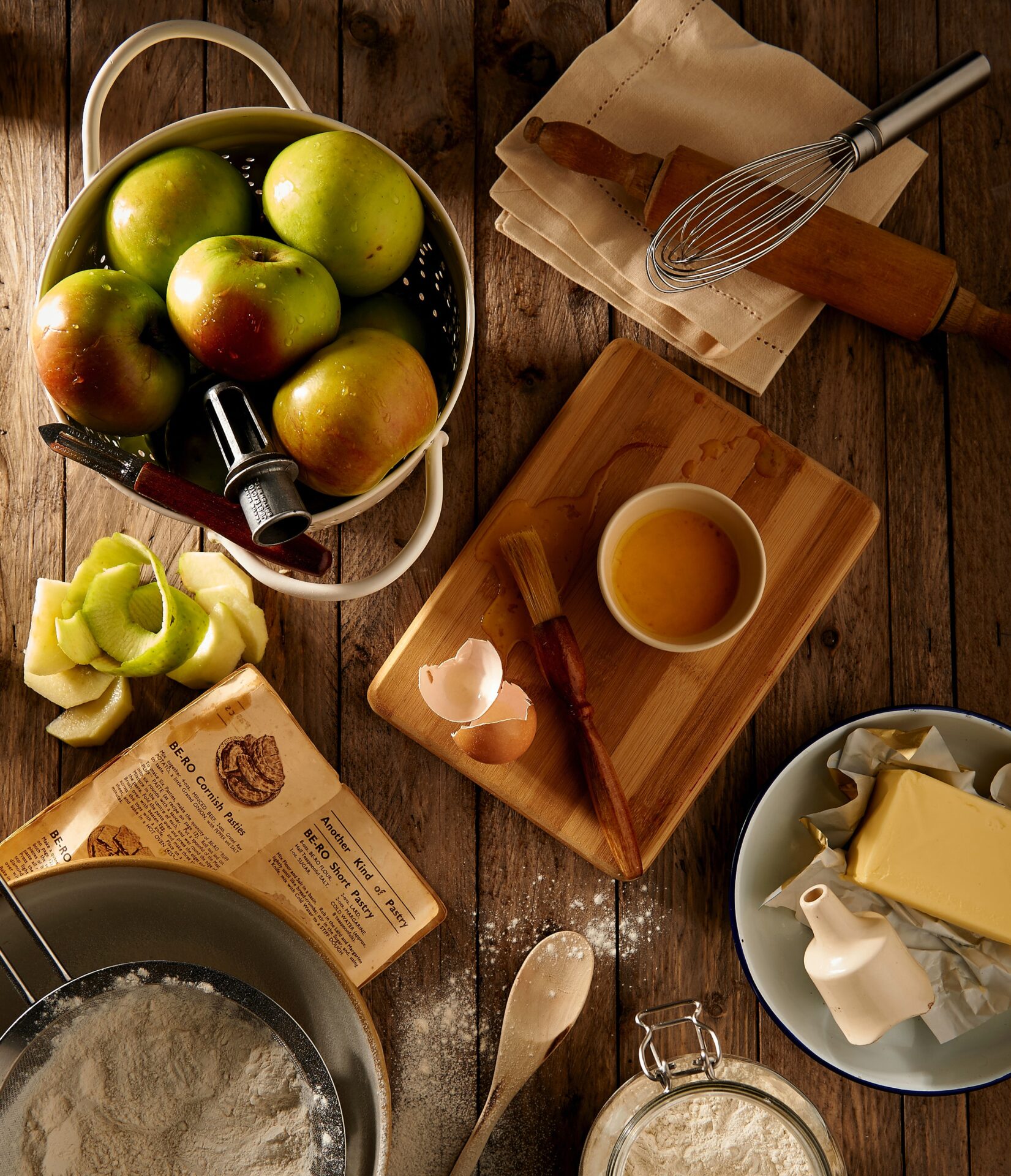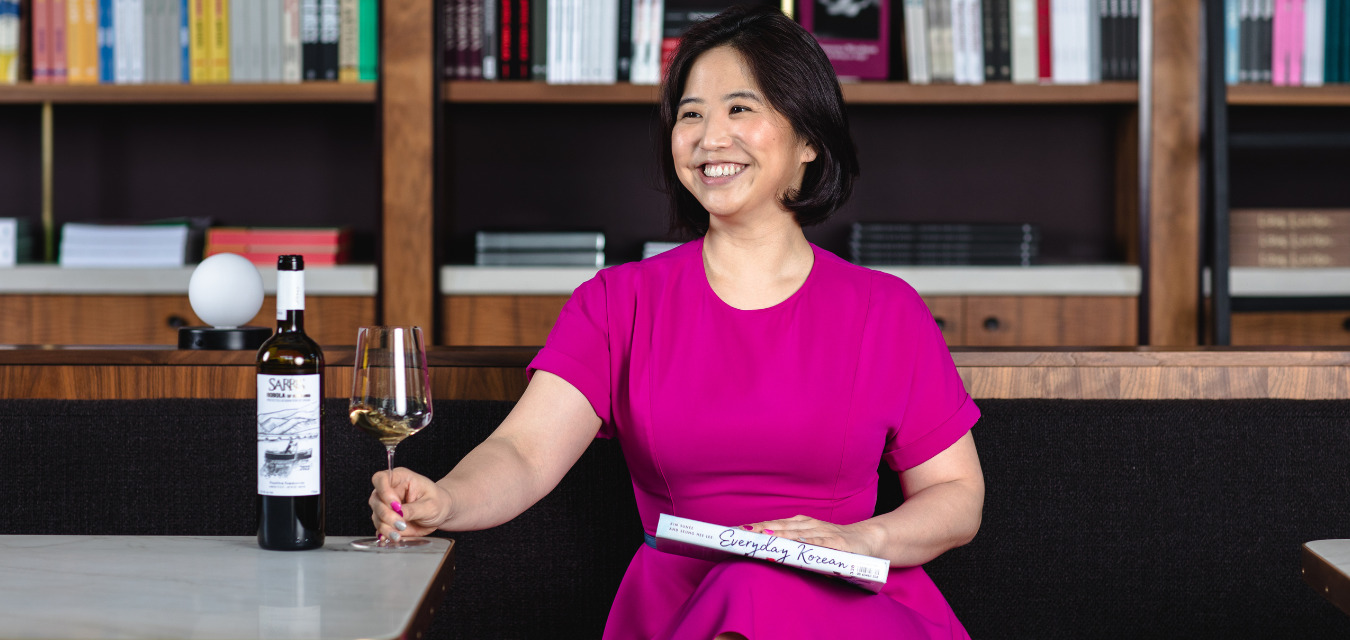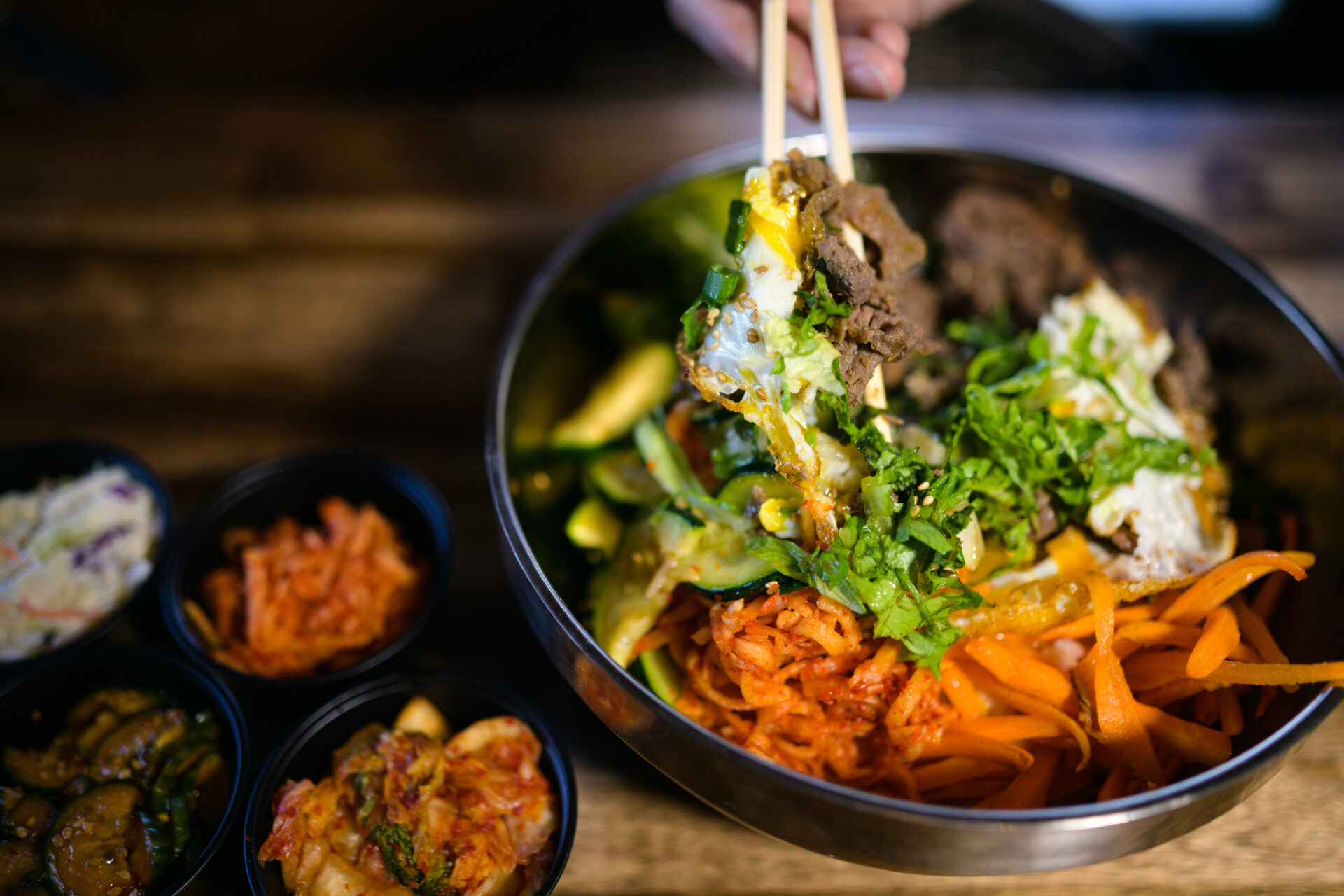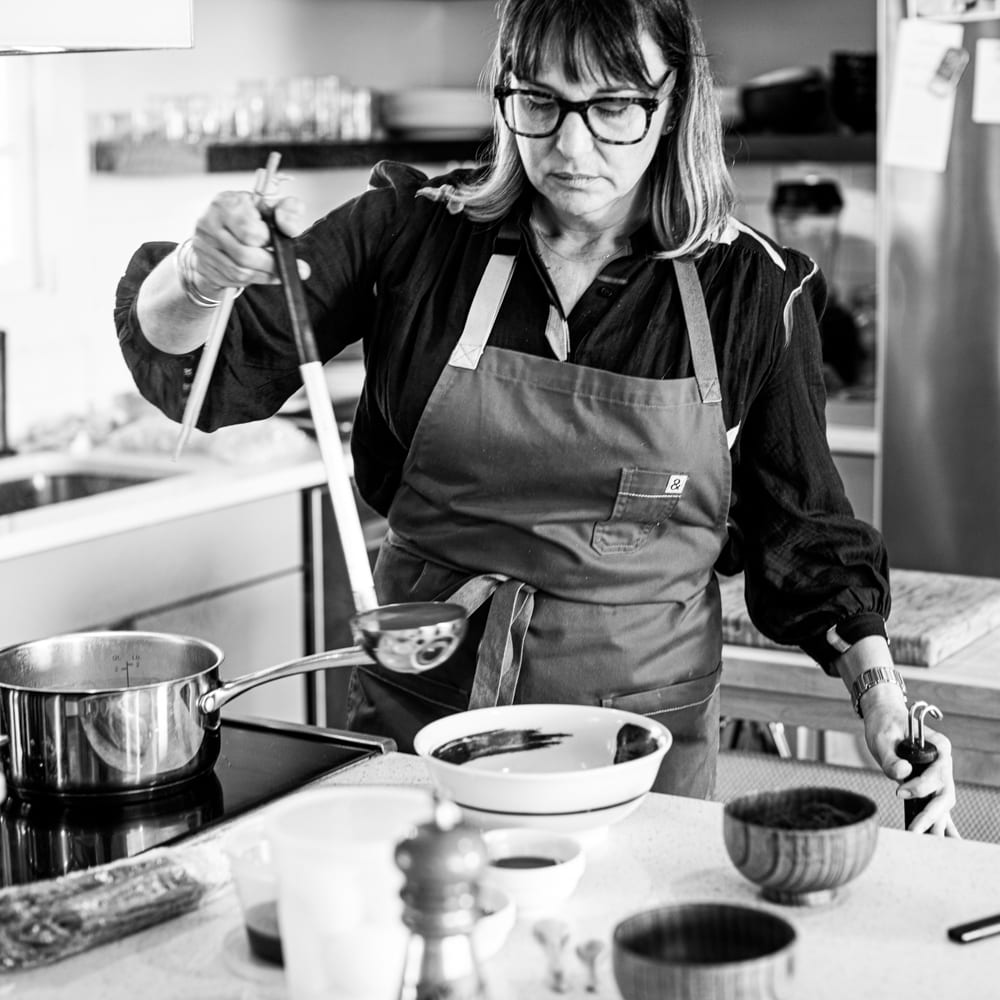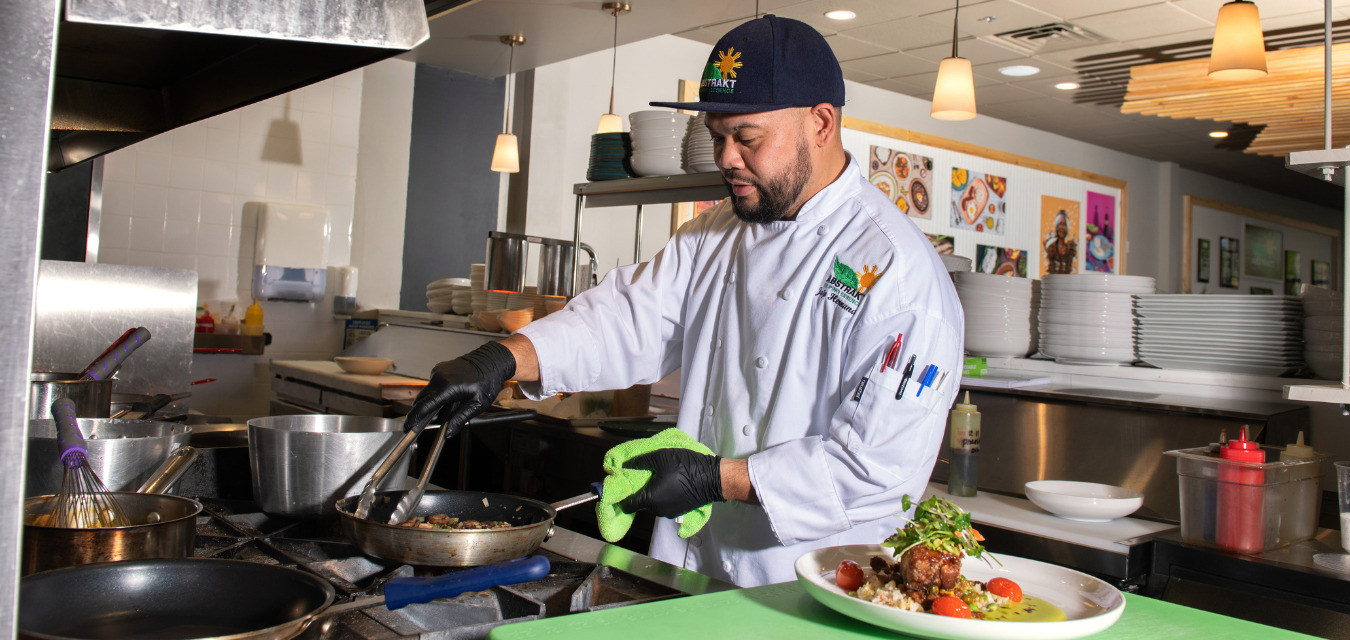Korean Fusion’s Seung Hee Lee makes a perfect match of low-impact wines and Korean recipes

In Korea, fall is traditionally the time when women make kimchi to last through the winter, preserving the nutrients in cabbage, radish, and onion by fermenting them. They then lay out the radish greens along the edges of the roof to dry. “It’s a very scenic thing to see, actually,” says Seung Hee Lee, PhD in human nutrition, Korean food cookbook author, and natural wine pairing expert. “My grandmother, it’s a specialty of hers, and she would put it in a doenjang jjigae, soy paste stew, and it almost mimics a meatlike texture.”
Lee goes on to describe how this stew is eaten with radish kimchis, one red and one white, along with aged radish that has marinated in doenjang (soy paste) to absorb the salty, umami flavor: “Oh my god, there’s nothing like it,” she says. “Now you have an entire meal with 50 different shades of radish and a bowl of rice. I think that is the beauty of different Korean culinary techniques that really cherish something so pedestrian.”
Lee, who was born in Korea and pursued a master’s degree in food and nutrition at Ewha Women’s University, also studied at the Taste of Korea Institute on weekends to learn the specifics of traditional Korean royal court cuisine. Her mentor at the time encouraged her to study that style of cuisine; the “old-school” recipes, some of them written for 500 people, intrigued Lee, as did converting them to modern specifications.
But when she attended Johns Hopkins Bloomburg School of Public Health on a scholarship to study for her PhD, Lee says, “I quickly realized my skill sets do not apply here in the United States because all the vegetables would be different. Even though I’m using the same Napa cabbage, the terroir is different, the sizes of the vegetables are different, and the salt is different, you know, when making kimchi. So I had to relearn and modify some of the recipes that I knew.”
That’s why she wrote Everyday Korean with Kim Sunée, a cookbook explaining how to make Korean recipes in America. She asked her social media followers what they were afraid of making in Korean cuisine, from dealing with raw meat in making beef tartare to fermenting kimchi, and then adapted the processes to the time and ingredients available in Western cultures and markets.
A good example of this is her kimchi slaw, which friends have called “the gateway drug to Korean food,” where apple cider vinegar mimics the fermentation process. For fermentation beginners, she recommends starting with turnips and radishes because of the natural enzymes that make them easy to ferment. “When you can kind of gain confidence starting small like that, you are more likely to try something new next time, right?”
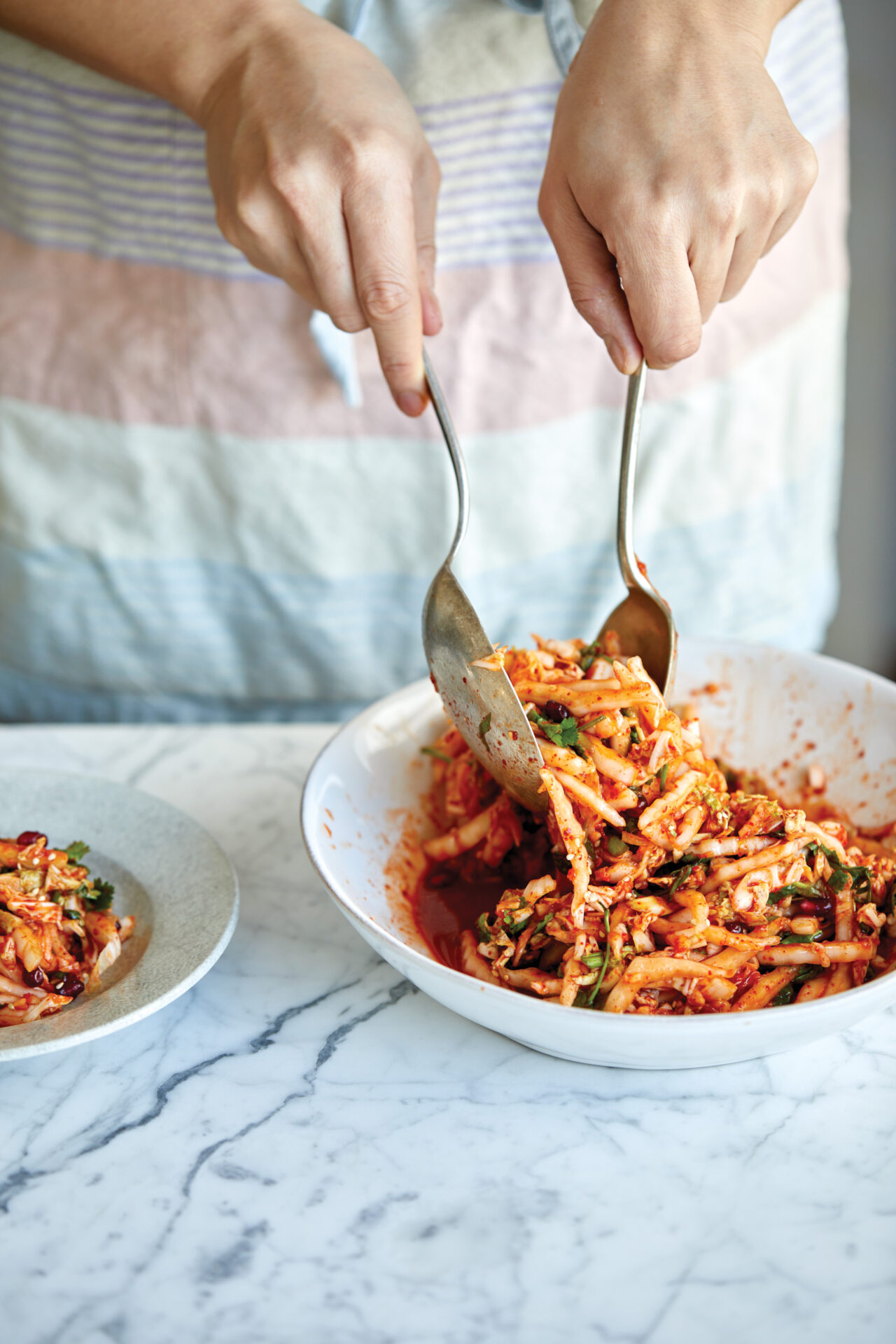
Lee also wants to see Korean recipes, food, and cooking techniques treated as versatile in the same way Western culinary tradition usually is. “I really think that Korean food in America does not have to look like Korean food in Korea. I believe in adapting to what is around me. And that means I can make kimchi with snow turnips that are very delicious and common, [and] easier to find here than trying to find Korean radish. That kind of becomes limiting to people when, at the end of the day, my goal is to encourage people to try Korean flavors.”
The reverse is also true: “I’m going to make kimchi with pineapple because I can and because it’s delicious, and I’m going to serve it with Hawaiian luau roasted pork,” she says. “At that point, is it Korean? I don’t know, I don’t care. Kimchi doesn’t have to be eaten with rice or other Korean foods. It could be next to your hamburgers. You know, it could be on your pizza. It could be incorporated into your everyday American ways of living. And I really want to see that, and honestly, I think we are seeing that now.”
This perspective is also the impetus behind her wine pairings. Frustrated with the repetitive pairings of what she calls “the monolith of ‘Asian food’” with sweeter white wines like riesling and gewürztraminer, Lee has established herself as an expert in the area with her Korean fusion natural wine dinners.
“I got into natural wine completely by chance,” Lee says. Of her first experience with a bottle of pét-nat on a solo trip to Paris, she notes, “It blew me away because there were some commonalities to certain Korean fermented flavors.” Just like in Korean fermentation, natural wine relies on wild yeast rather than cultured or commercial yeast. “Wild fermentation really relies on the artisan’s technique, as well as the cleanliness of the environment,” Lee says. “That really aligned with me because I understood Korean ways of fermentation.”
As for the ability to identify the nuances in wine, Lee credits her mother. When they went out to eat growing up, her mother would ask Lee to guess the ingredients in sauces they tried. Then they would try to re-create the flavors at home. “That process helped me understand and identify certain flavor profiles,” Lee says.
She’s spent years self-teaching by tasting natural wines and how they change over time after being opened—and she disagrees with the notion that you have to formally train in order to appreciate and understand wine. “It really liberated me not having that education because I can just say whatever I tasted.
“I think that’s one of the reasons why I really liked natural wine, because it really broke free from conventional ways of looking at wine, pairing wine. And for me, that rebellious nature of natural wine, you know, is very attractive to me. Because I’m a rebel myself.”
Korean Recipes and Wine Pairings
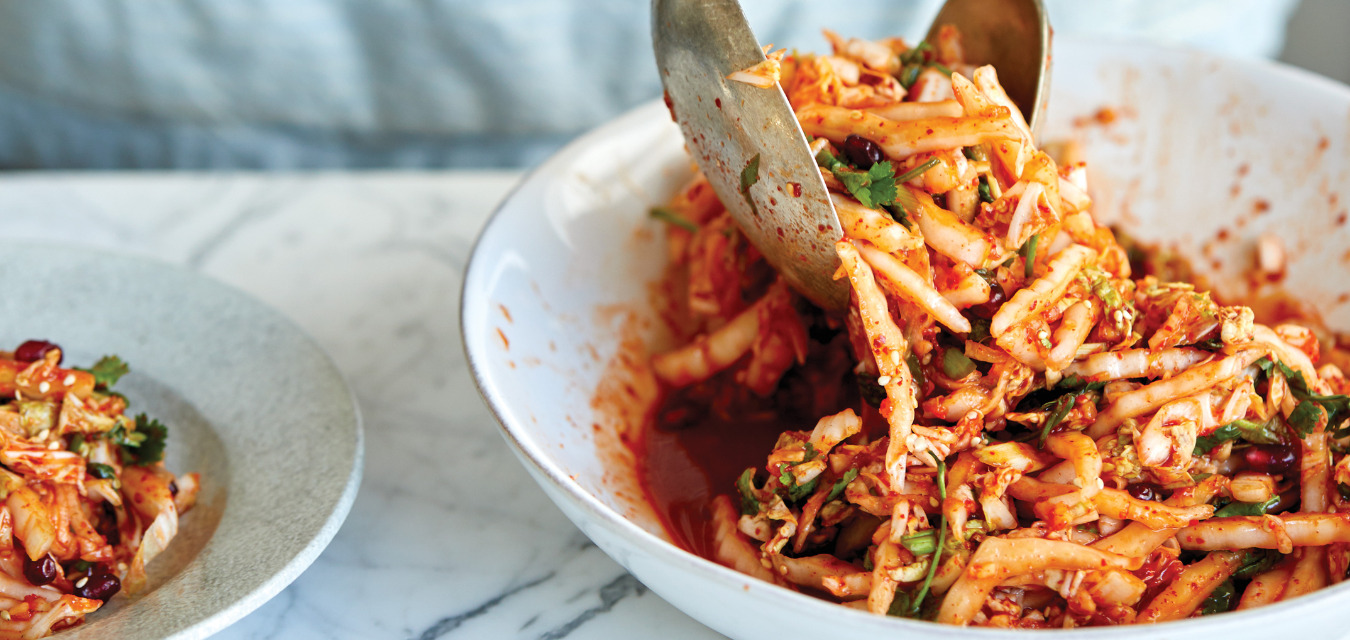
Kimchi Slaw
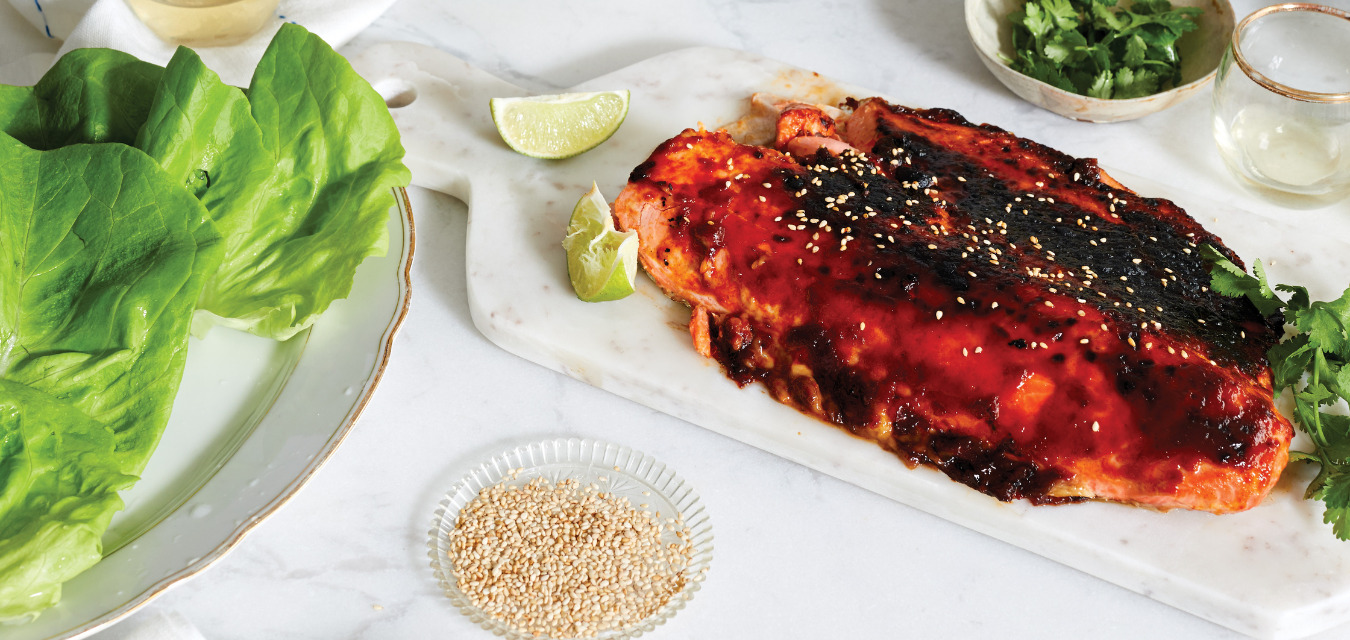
Roasted Salmon with Gochujang Mayo
Pair with Sparkling rosé:
Agnes & Rene Mosse Moussamoussettes Pétillant Naturel 2021
Domaine La Grange Tiphaine, Rosa, Rosé, Rosam 2022
Cruse Wine Co. Cruse “Tradition Rosé”
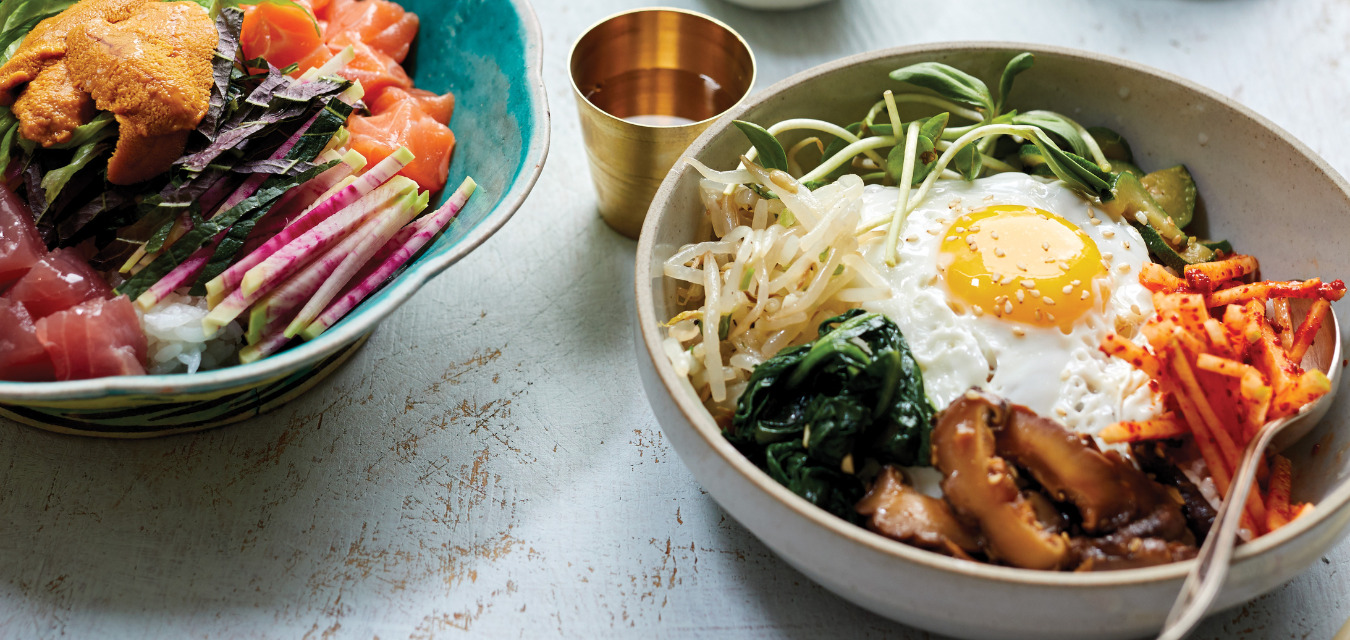
Mushroom Bibimbap
Pair with Pinot noir
Domaine Drouhin Pinot Noir from Oregon
Domaine Berthaut-Gerbet Fixin 2020
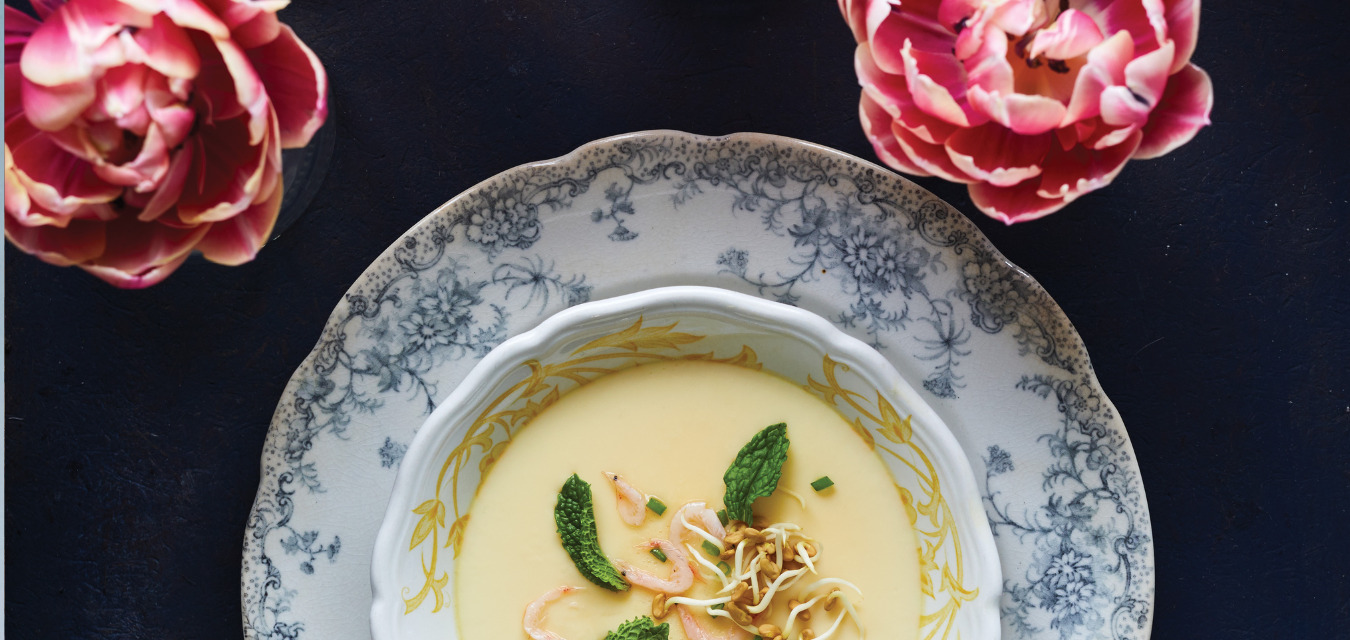
Gyerin Jjim (Savory Steamed Egg Custard)
Pair with Chardonnay or Chenin Blanc from the Loire Valley
Nouveau Nez 2021 by La Grange Tiphaine
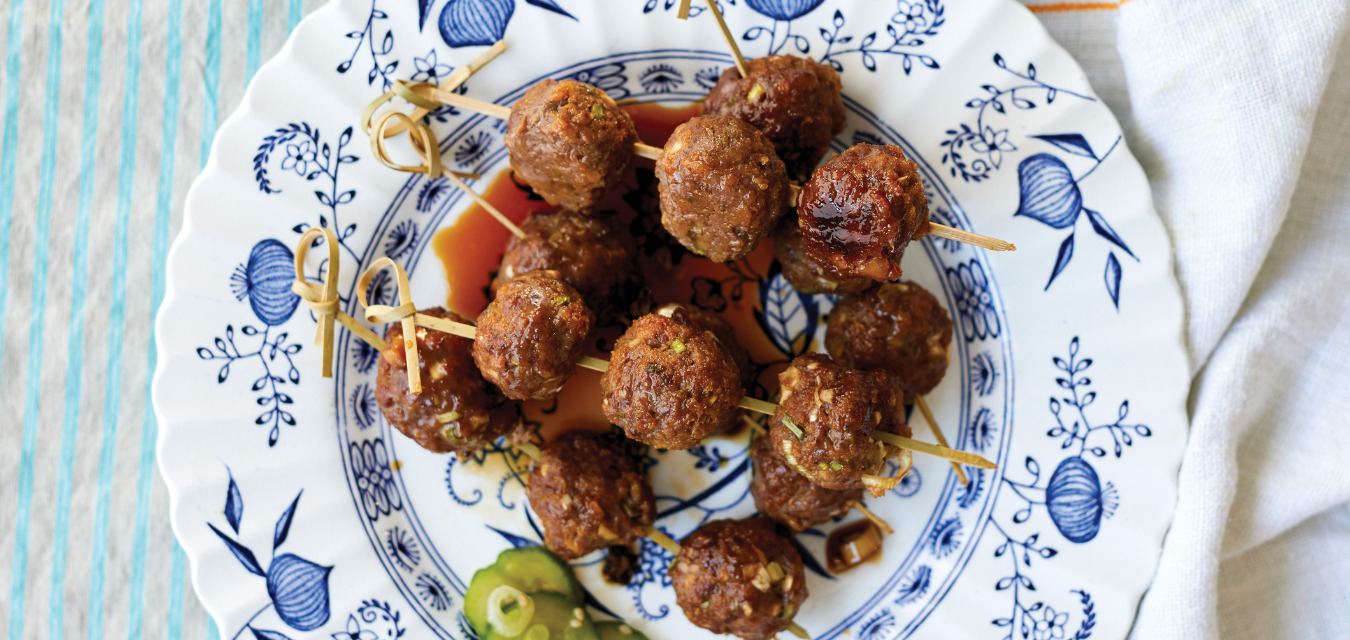
Beef Bulgogi Meatballs
Pair with Gamay
Domaine Chapel Beaujolais-Village 2020
Marcel Lapierre “Le Beaujolais” 2021
keep reading
On the Road
Roadside Attraction: Fat Tiger Korean BBQ
Fat Tiger Korean BBQ, an unexpected Korean barbecue restaurant finds itself at home in Middle Tennessee in White Bluff.
At the Table
Otaku for Ramen
Armed with little more than taste memories and YouTube videos, Nashvillian Sarah Gavigan taught herself how to make ramen and amassed a loyal following in the process.
In the Field
Filipino Chefs in Jacksonville: Jojo Hernandez
Looking for authentic (with a twist) Filipino restaurants, Abstrakt Filipino Essence, that serve simple, creative, and delicious food? Enjoy!
share
trending content
-
A Kamayan Filipino Feast | Listen
by Emily Havener -
Corn of Life with Julio Hernadez | Listen
-
Recap: Charleston Wine + Food 2025
by TLP Editors -
A First Look at Camaraderie | Listen
by Amber Chase -
In the Fridge with Alton Brown
by Emily Havener
More From From the Magazine
-
In the Fridge with Alton Brown
-
Our 2025 Dining Guide to the South is Here!
-
Our Spring 2025 Issue is Here!
-
Our Favorite Holiday Recipes
-
Our 2024 Winter Issue is Here!



